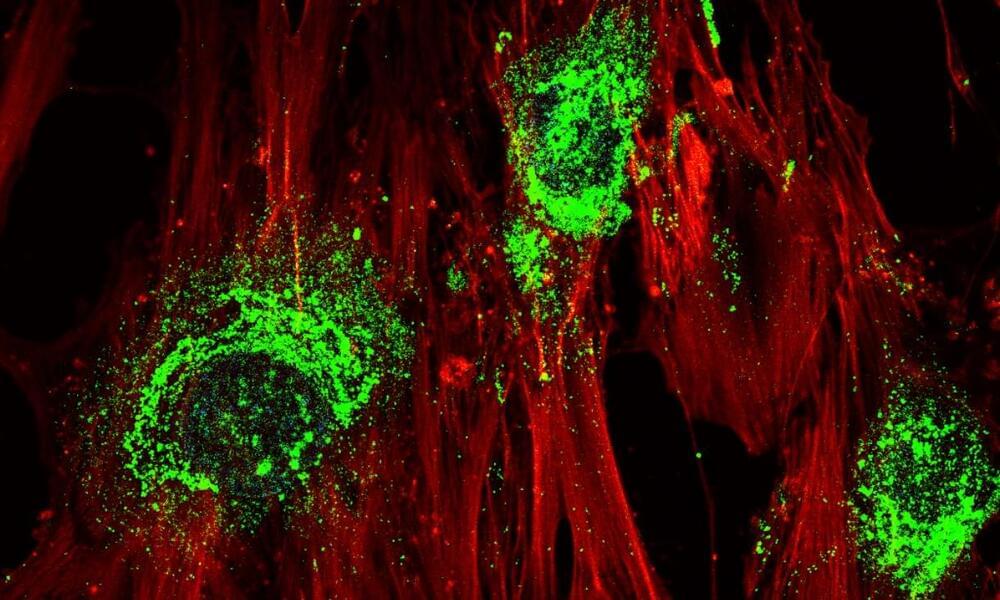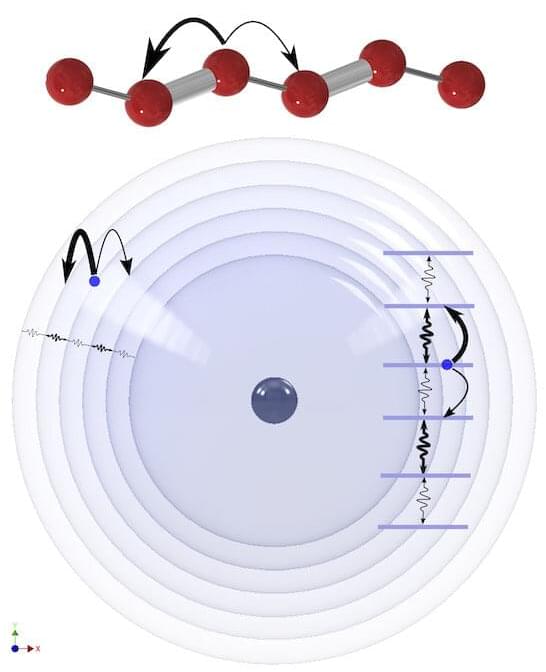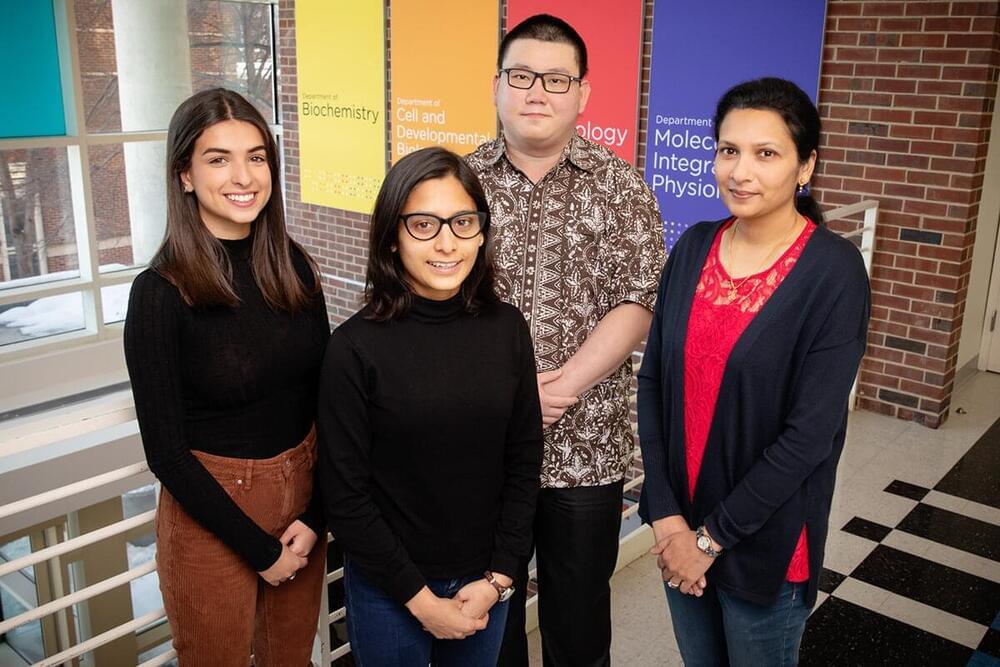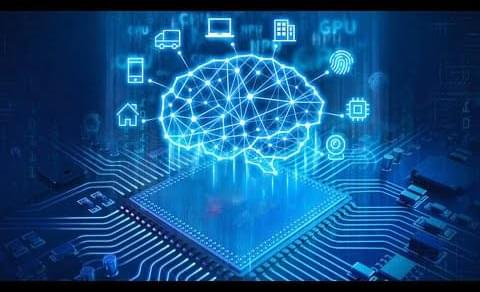Russia in 2008 and 2014 used the same playbook currently being enacted in Eastern Ukraine. Can the world reverse the march to war?
Regrowing or replacing bone lost to disease is tricky and often painful. In a new study Australian researchers have found a relatively simple way to induce stem cells to turn into bone cells quickly and efficiently, using high-frequency sound waves.
Stem cells have enormous medical potential in helping to regenerate various tissues in the body, but bone has proven particularly hard to work with. Bone originates from what are known as mesenchymal stem cells (MSCs), which mostly reside in the bone marrow. Collecting these is a painful procedure, then converting them into bone cells is difficult to scale up to useful levels.
But researchers from RMIT have now found a faster and simpler way to induce MSCs to turn into bone cells. Previous studies have suggested that the vibrations from sound waves can induce cell differentiation, but it typically took over a week with mixed results. These experiments have been limited to low frequencies, and it was thought that higher frequencies would have little benefit. So for the new study, the RMIT team investigated these higher frequencies.
Our spatial sense doesn’t extend beyond the familiar three dimensions, but that doesn’t stop scientists from playing with whatever lies beyond.
Rice University physicists are pushing spatial boundaries in new experiments. They’ve learned to control electrons in gigantic Rydberg atoms with such precision they can create “synthetic dimensions,” important tools for quantum simulations.
The Rice team developed a technique to engineer the Rydberg states of ultracold strontium atoms by applying resonant microwave electric fields to couple many states together. A Rydberg state occurs when one electron in the atom is energetically bumped up to a highly excited state, supersizing its orbit to make the atom thousands of times larger than normal.
Embryonic stem cells and other pluripotent cells divide rapidly and have the capacity to become nearly any cell type in the body. Scientists have long sought to understand the signals that prompt stem cells to switch off pluripotency and adopt their final functional state.
In a study published in the Proceedings of the National Academy of Sciences, researchers report that they have identified a key regulator of this process. They discovered that a molecule known as BEND3 shuts down expression of hundreds of genes associated with differentiation, maintaining the cell’s stem cell-like status. Only when BEND3 is downregulated can cells adopt their final form and function. Once they differentiate, they usually stop actively proliferating.
The findings are relevant to understanding normal development and also may be useful in cancer research, said University of Illinois Urbana-Champaign cell and developmental biology professor and department head Supriya Prasanth, who led the research.
Scientists created a new type of Computer Chip which has the ability to constantly rewire itself just like the human brain and is thus able to more efficiently adapt to new processes. This is a new type of neuromorphic computing and holds great promise for future and better Artificial Intelligence models which more closely resemble how humans behave. You will not believe this unbelievable AI Robot Computer Chip!
–
TIMESTAMPS:
00:00 A living Computer Chip.
01:32 How this new AI Chip works.
03:12 Does this Chip outperform Human Brains?
05:38 IBM’s return to Glory?
08:17 Last Words.
–
#chip #ai #brain
A healthy diet, exercise and sleep are usually enough to live longer, however there are some other daily habits that can limit lifespan.
A large new study shows people who contracted #COVID19 faced substantially higher risks of neuropsychiatric ailments 1 year later, including brain fog, depression, and substance use disorders.
Dozens of papers have examined the lingering mental health effects of COVID-19, but many have measured conditions such as depression and brain fog only a few months after infection. Now, a giant new study shows people who contracted COVID-19 faced substantially higher risks of neuropsychiatric ailments 1 year later, including brain fog, depression, and substance use disorders. The report, based on millions of people who used the U.S. Department of Veterans Affairs (VA) health system early in the pandemic, is published today in.
“Most of us experienced some sort of mental distress during the pandemic, but this shows that people with COVID-19 had a much higher risk of mental health disorders than their contemporaries,” says senior author Ziyad Al-Aly, a clinical epidemiologist at Washington University in St. Louis and chief of research at the VA St. Louis Health Care system. “It’s a wake-up call.”
Other scientists praise the study’s size. “The scale of … this study sets [it] apart … as well as the quality of the statistical methods used,” says Alex Charney, a neuroscientist and psychiatrist at the Mount Sinai Health System.
Bipartisan hostility toward China means US lawmakers are unlikely to cite Chinese regulations as inspiration. But Beijing’s manoeuvres could perhaps have a subtle effect. In the UK, some lawmakers have called for online companies to shield young people from harmful content in an approach that some have likened to China’s proposals. “These ideas could ripple out,” says Matt Sheehan, a fellow at the Carnegie Endowment for International Peace who researches China’s AI ecosystem. “What’s interesting in China is that they’re going to be able to run experiments at a very large scale on what it actually means to implement these ideas.”
Sweeping rules will cover algorithms that set prices, control search results, recommend videos, and filter content.
Tauba Auerbach’s eclectic works reignite wonder where art and science collide in this career survey at the San Francisco Museum of Modern Art.









